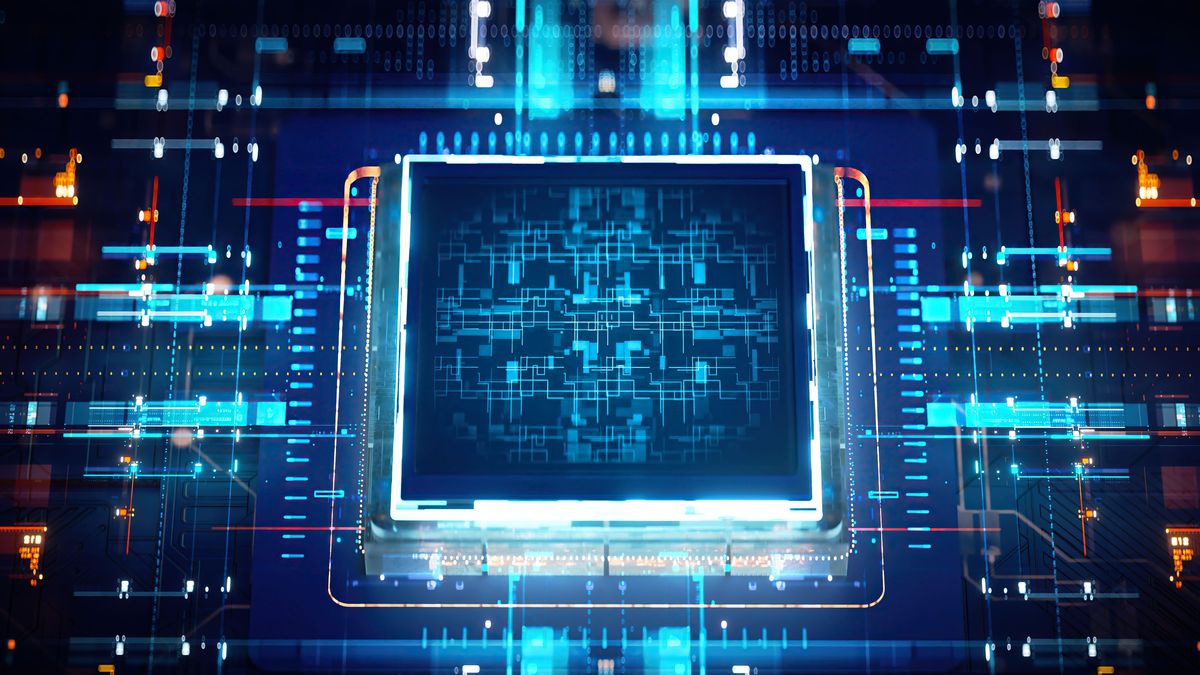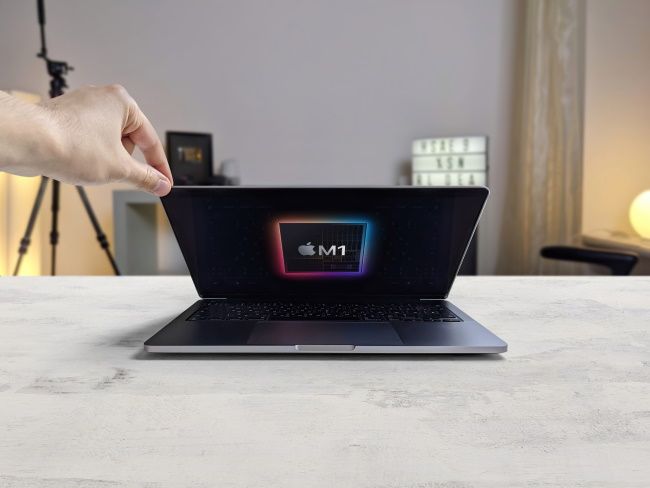Quick Links
Integrated graphics refers to a GPU (Graphics Processing Unit) that's built into the same package as the CPU (Central Processing Unit.) In enthusiast computer circles integrated graphics is often derided, but this approach to GPU design has many important advantages.
Graphics Needs Specialized Hardware
Modern computer graphics, with high-definition video and detailed 3D rendering in video games and professional applications, is a demanding job. While a CPU can create ("render") graphics, it lacks the right type of architecture to do it quickly and efficiently.
This is why we have GPUs, which are built from the ground up to be great at the sort of math you need to calculate the correct values of millions of pixels dozens or hundreds of times every second. Every computing device, from PCs to smartphones, has a GPU in it.
The only computers that don't have GPUs are usually "headless" servers that are remotely operated and only do work suited to CPUs. However, even that's changing, since GPUs are now being used to do things other than graphics, but that's a story for another day! Any computer that outputs to a display today almost certainly has a specialized GPU inside it.
Integrated vs. Dedicated Graphics
When you buy a laptop or desktop computer, the specification sheet will often say that the computer comes with "integrated" or "dedicated" graphics. There's a big difference between these two approaches to including a GPU in a computer.
A dedicated GPU means that the GPU has its own independent processor package. It has its own separate cooling solution. Dedicated GPUs also have their own power management hardware and memory. A dedicated GPU is like its own self-contained computer!
In a desktop computer, dedicated GPUs come on their own circuit board, generally known as a graphics card. The card slots into the computer's motherboard and often needs more power than can be provided through the card slot. So it may also have its own dedicated power connections from the computer's power supply.
Dedicated graphics in laptop computers sometimes come as a removable package, such as the (now discontinued) MXM laptop GPU modules. More commonly, they are soldered directly to the mainboard, but they are still dedicated as separate components from the CPU. With their own cooling, memory, and power.
An integrated GPU, on the other hand, has to share everything with the CPU. This is why it's often called an onboard GPU. It sits in the same processor package, is cooled by the same heatsink and heat spreader, and shares the same system memory as the CPU. The motherboard provides the display output hardware that allows you to hook up a monitor, but all the "brains" of the GPU are inside the CPU's package.
The Advantages of Integrated Graphics
With the exception of high-end CPUs, virtually all computer CPUs today have an integrated GPU. It's probably fair to say that the integrated GPU model is the most common GPU type out in the wild. There are a few good reasons why it's so popular, but as always there's a relatively short list of important ones.
The first is cost. It doesn't add that much cost to a CPU to also etch a GPU into your silicon real estate. Including a GPU in every GPU reduces costs in other parts of the system by far more than it increases the cost of the GPU itself. So systems that use integrated GPU are significantly cheaper than those with a dedicated solution.
The second major reason is complexity. This is especially relevant to laptop computers, where every cubic millimeter of volume matters. By integrating the GPU into the CPU package, laptops can be dramatically smaller, since you don't need all the extra supporting hardware to cool, power, and connect an entirely separate chip package.
The third pillar of integrated GPU design is power efficiency. It's much easier to manage the power draw of a single integrated chip than to balance the needs of two separate ones. Since the GPU and CPU are tightly integrated, they can make sure they fit neatly into the TDP (Thermal Design Power) of the CPU package.
Laptops with dedicated GPUs usually also have integrated GPUs, the operating system will dynamically switch between the two depending on the application you're using. So you aren't burning through battery power by using a high-performance GPU while doing spreadsheets.
The Disadvantages of Integrated Graphics
If integrated graphics are such a good idea, why do we use dedicated graphics at all? The short answer is that dedicated cards have far more performance potential.
A dedicated GPU can be physically bigger, has a much larger power budget, and can safely reach higher temperatures in operation. It also has access to specialized, high-performance memory designed specifically for the needs of graphics applications.
For a long time, integrated GPUs have been synonymous with poor performance, only good enough to use for basic productivity tasks, and limited multimedia. Gaming? Totally out of the question!
That's not really true anymore in 2022, since GPU technology has improved integrated graphics performance to the point where most users, including casual gamers, really don't need dedicated GPUs. However, it's still true that dedicated GPUs today are much faster than integrated ones.
Integrated Graphics and System-On-a-Chip Devices
Another type of integrated GPU is found in SoCs or System-on-a-Chip devices. SoCs don't just integrate the CPU and GPU into the same package, they also integrate the system memory, and often even storage!
Since SoCs are designed with specific total performance targets in mind, the GPUs in them can be quite beefy. The Apple M1 SoC, for example, has more graphical power than a Playstation 4, while the CPU still manages to compete with high-end laptop CPUs.
Modern consoles like the PlayStation 5 and Xbox Series X integrate high-performance CPUs and GPUs into the same package, but they are designed to dissipate the massive amount of heat this causes from the ground up.
Which GPU Design Is Right for You?
If performance is the most important thing for you when it comes to graphics, then there's no doubt that you should buy a desktop computer with dedicated graphics. If battery life, cost, heat, and noise matter most to you, an integrated solution is likely what you need.
Desktop users have the option to add a dedicated GPU to their system at a later date, assuming your motherboard has the correct slot and your power supply and chassis are up to it. So you can try out the integrated GPU on your CPU to see if it's good enough for your needs.
Ultimately, the most important thing is that you do some research about the performance capabilities of the integrated GPU your prospective CPU has. You may be surprised at just how much power is packed into that tiny processor.



